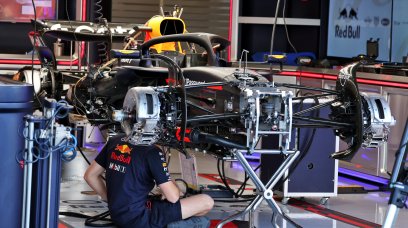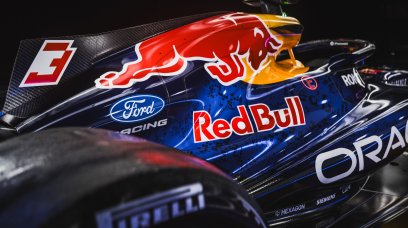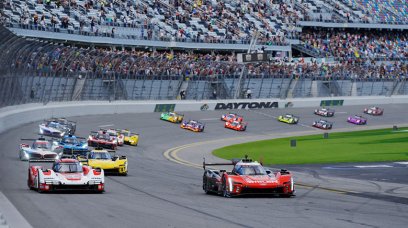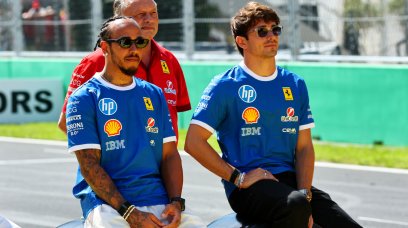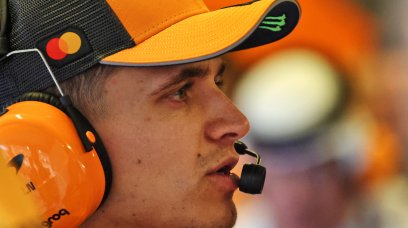The surest, quickest way for an entity - whether country, circuit, commercial brand, motor manufacturer (OEM), or multi-millionaire - to hit world headlines is to suggest some form of Formula 1 venture. Equally, ‘name-dropping’ can be used to commercial advantage in order to throw fans and media off-scent or to provide leverage to strike a deal. Plus, ‘warm’ stories ultimately prop up Liberty Media’s F1 share price. Consider recent rumours that Adelaide was seeking a return to the F1 calendar: was there a genuine intention or had these suggestions been planted? Who knows - but the bottom line is that it is hardly coincidental that Melbourne then extended its deal; equally, consider Porsche’s F1 ‘entry’ which is as far from reality as it was last year January, yet the connection is regularly referenced even after the entry date 2026 date closed. Thus, it is usually wise to look the other way when sudden claims or rumours arise, then sit back and analyse the situation. So it is with Ford, linked this week by the Italian media with a return to motorsport’s top echelon via Red Bull Racing. Could it happen? If one considers all aspects (see below) there is potential ‘fit’ between the Blue Oval and F1. That alone does not, though, make it a done deal. Far from. First off, some regulatory background: The FIA is committed to imposing a budget cap on Formula 1 power unit suppliers, who were required to register by 15th October 2022, a date extended by a month after a single brand (newcomer Audi) entered. Subsequently Red Bull Powertrains, Renault, Mercedes, Ferrari and Honda all registered ‘intentional’ entries. Note the absence of Porsche and Ford on the list. Broad specifications for 2026 call for hybrid 90° V6 turbocharged power units based on current architectures but without costly, complex - and no longer road relevant - MGU-H exhaust-driven generators. To maintain outputs at a headline 1000bhp the mix between internal combustion engine and hybrid shifts to 50/50, up from 80/20. Crucially, ‘drop-in’ fuels, which replace fossil derivatives with minimal changes, are specified. At time of writing the cap has not been formalised and hence no definitive regulations have been tabled, but the word is that it will be $100m per annum. Consider that existing PU suppliers spend between $220m and $300m on their F1 PU operations - with recoveries pegged at around $25m per customer team - and clearly the sport is serious about its cost-effectiveness drive. That attracts brands, particularly in this day and age.
Honda returns to Red Bull
Now consider Red Bull: With its 2021 establishment of the Red Bull Powertrains division, the team is self-sufficient on the PU front come 2026, having originally planned to enter into a joint venture with Porsche: RBPT would build and supply powertrains badged as ‘Porsche’. These would also be provided to sister outfit AlphaTauri – and, if the FIA so decreed, be supplied to whatever number of customer teams. The word had been that current supplier Honda would come is as badging partner, potentially aiding with hybrid technology. These odds decreased after the Big H confirmed earlier this week that it had lodged an own entry on a pro forma basis – thus keeping its options open. Which begs the question: Is it coincidental that another OEM is suddenly linked to Red Bull; could this simply be a tactic to nudge negotiations along? Although Red Bull team boss Christian Horner has stressed that no engine badging partner is needed, he does not deny that such a deal would be welcome if an arrangement helps defray costs while allowing Red Bull’s management to operate the race team without hindrance. This aspect, more than any other, is said to have caused talks with Porsche to collapse. Forget not that Red Bull hold all the aces: They have lodged a 2026 entry, the RBPT project is far advanced and headed by experience ex-Mercedes F1 personnel and Red Bull do NOT need funding yet could sell badging rights to any entity wishing to enter F1, whether OEMs, oil companies, consumer labels or computer brands. Consider: Red Bull-Ford, Red Bull-Exxon, Red Bull-Rexona or Red Bull-Apple or similar. It follows that Ford is not the only badging game in town, but the Blue Oval is a soft target for Red Bull: The energy drinks brand has long sponsored Ford’s WRC team - outsourced to Malcolm Wilson’s M-Sport operation - plus there are some historic F1 links: In 2004 Ford sold its then-Jaguar F1 operation to Red Bull. Indeed, the Milton Keynes campus was once bedecked in green and RB01 was designed as the Jaguar R6… Still, if there is no truth in such rumours, why do Red Bull and Ford not issue denials and get done with them; equally, if the opposite applies, why not confirm? Simply, the longer such stories are bandied about the more global exposure gained by both brands – for free – while being able to distance themselves at a later stage without a blatant U-turn on the basis that they had not originated the stories. PR works in weird ways. The next question is: What would be in it for Ford given the global automotive industry’s shift to electric? There are two parts to the question, namely technical and marketing. The answer to the former lies in the 50/50 split outlined above: The company was recently spun into two divisions, namely Ford Blue (ICE vehicles) and Ford Model E (electric cars). Thus, both divisions gain from a F1 PU deal: Blue punts F1’s ICE and e-fuels technologies via “Racing improves the breed” - paraphrased from Ford’s F1 past - while Model E markets the hybrid platform using another historic slogan: “Win Sunday, Sell Monday”. Electric cars are fundamentally plug-in hybrids without an ICE, and if F1 goes AWD for energy recovery purposes - as has been mooted - then so much the better.
The marketing angle for Ford
Then the marketing angle: There are no doubts that F1 is on the up and particularly so in the USA, so Ford would be remiss if it did not at least investigate that platform after having built a solid reputation via a 40-year F1 presence commencing in 1967. Indeed, at one stage global motorsport was all about Ford vs Ferrari in both F1 and endurance racing. Add in Red Bull’s marketing genius and success and it points to win-win. Now the crux: If Ford covers all (or substantial portions of) RBPT’s costs it has immediate access to F1 at a fraction of costs of entry in its own right, plus be in partnership with a winning team. There is a precedent: Essentially the deal would be no different to Ford’s initial F1 entry: bankrolling the Cosworth DFV in return for tappet cover badging. Equally, refer Ford’s WRC programme with M-Sport (above). None of this, of course, means that a deal will happen, just that one could be struck if all stars align on all fronts. That said, even if CEO Jim Farley, who has raced both a Ford GT40 and Ford-powered Cobra to podium places in international historic racing, approves such a venture it faces another hurdle: William Clay Ford Jr, executive chairman of the wider company simply because his family name hangs over the door. So, too, does that of Wolfgang Porsche hang over the door of an eponymous company, and it is he who is said to have finally scuppered the Stuttgart company’s proposed venture with Red Bull…
Most read
